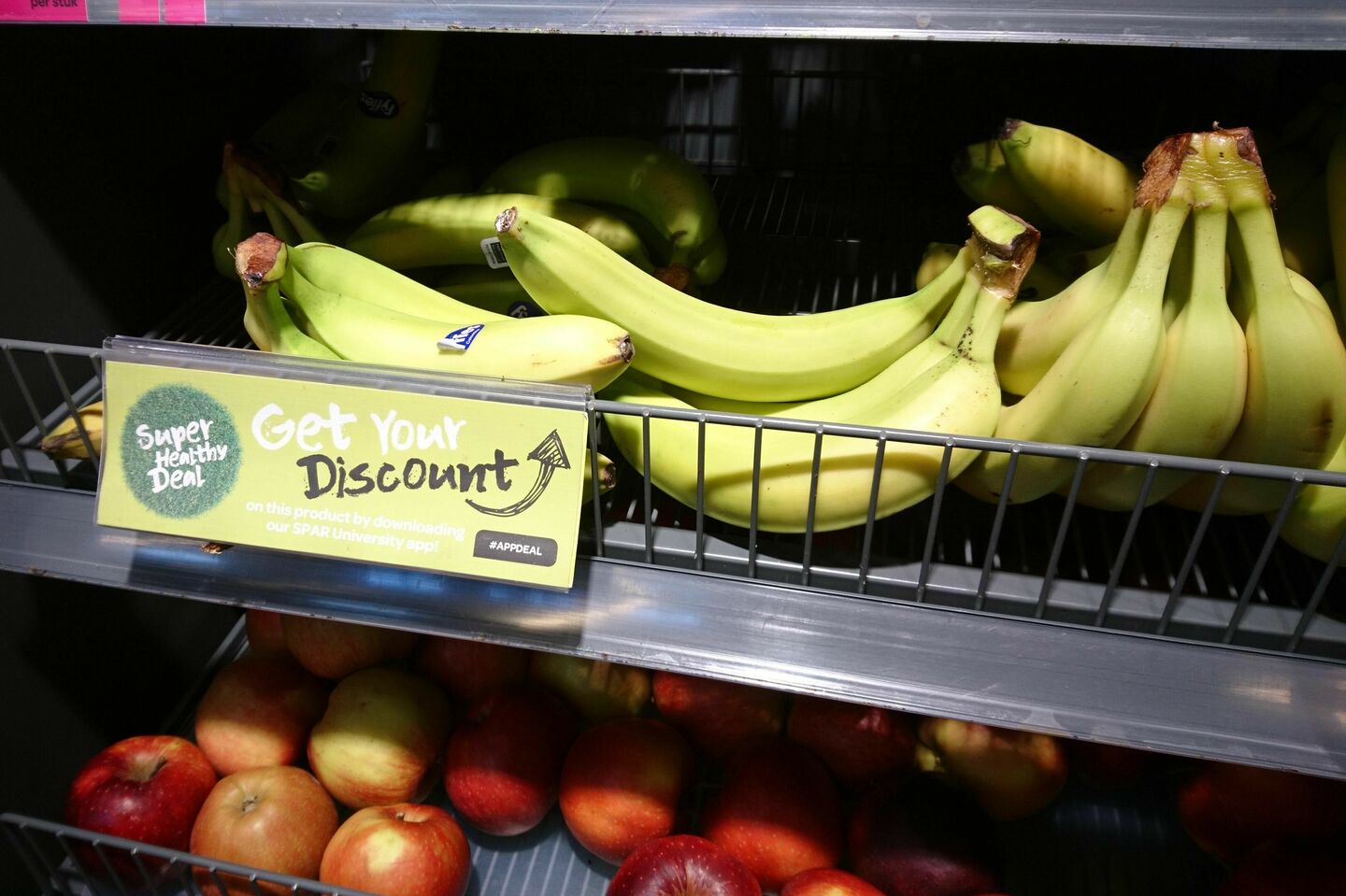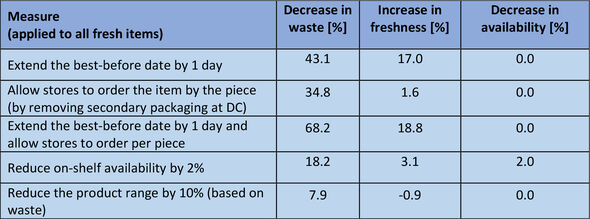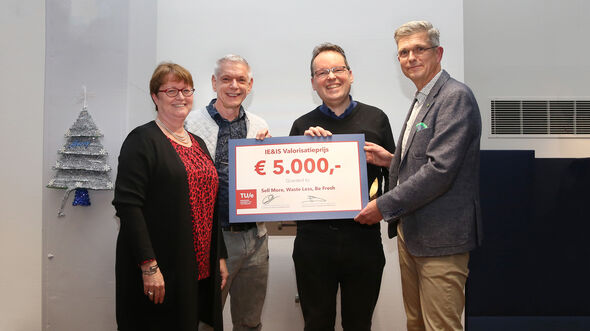
Combating food waste with smart purchasing
Huge quantities of food are thrown away every day in supermarkets because its shelf life has expired. Assistant Professors Rob Broekmeulen and Karel van Donselaar collaborated to develop a model that can significantly reduce this waste. Their efforts have earned them the first Valorization Award, the sum of five thousand euros, presented by their department, Industrial Engineering & Innovation Sciences.
Wherever fresh produce is sold the same problem arises: if you don't want the customer to face empty shelves at the end of the day, some of your stock is inevitably going to end up in the dumpster. You simply can't sell brown bananas or milk that is past the best-before date.
Often stores simply choose to stop offering products that don't sell well, says Rob Broekmeulen. But this is detrimental, he says, not only to the customer but also to the store. “There is an immediate saving albeit a small one, but it drives away customers and thus reduces turnover. In lectures I often give the example of the supermarket round the corner from where I live. It stopped selling the meat-substitutes my daughters are keen on and so we no longer shop there.”
Removing a slow-moving product from the range is, Broekmeulen says, one of the least preferable measures a supermarket can take in its efforts to reduce the amount it has to throw away - to prevent ‘waste’ as it is called in the retail business. “But, however, it is the easiest measure.” And he should know. The assistant professor has been working for over ten years with his colleague Karel van Donselaar on a model designed to help retailers improve their stock management of perishable produce. Encapsulated by the slogan ‘sell more, waste less, be fresh’, their study aimed to establish how supermarkets in particular can achieve an optimal balance of in-store product availability and minimal waste.
Van Donselaar: “Smarter ordering logic allows you to increase availability while waste remains constant, or you can maintain constant availability and reduce waste. For our model we came up with a very simple measure that indicates the likelihood of waste for a particular item: the fresh case cover. This can be calculated by dividing the minimum quantity of the product that the store can order by the demand expected throughout the shelf life. If this produces a figure greater than 0.3, then we believe you need to take measures.” One such measure would be to remove the secondary packaging, as it is called, before the product leaves the distribution center, and to dispatch smaller volumes to the stores. “This is extra work, I know, but it is more than worth the effort.”
At present stock replenishment is still done blindly; the level hits a certain low, an order is placed
Van Donselaar also points out a critically important factor: the variety of sell-by dates available for a particular product. “At present stock replenishment is still done blindly; the level hits a certain low, an order is placed. But if all the bananas on your shelves are going to be past it tomorrow, anyone can see you've got a problem. It is much too expensive to give every banana a best-before date, but we recently demonstrated that it is sufficient to keep track of the number of bananas in the incoming deliveries and the shelf life of each delivery. Then, using our models we can accurately estimate the variety of sell-by dates on the shelves.”
Rummaging
“We feed our model with stock, order and sales data from supermarkets,” Broekmeulen explains. “And when some type of machine learning is applied, this gives us the variety of sell-by dates. This differs not only from product to product, but from store to store. This is because customers don't always do the 'proper thing' and take the oldest products, which are placed at the front of the shelf, instead they often rummage around in the back for the fresher items.” In convenience stores, where people often pop in to buy their evening meal on their way home from work, this doesn't happen all that much, he explains. “But in the extensive suburbs built since the 1990s (the Vinex neighborhoods) where households do their grocery shopping once or twice a week, this rummaging behavior has a considerable impact on stock. Cut vegetables are notorious for it. So in these cases it is advisable to keep the fresher products in the warehouse a little while longer.”
It must be said that the researchers emphasize that the wastage in supermarkets really isn't that bad compared with what is thrown away by consumers. According to Broekmeulen, this is roughly four times as much. If their recommendations can help supermarkets sell fresher produce, it will mean more of these products are consumed before they perish. Thus in this indirect way, the work of these assistant professors at the Operations, Planning, Accounting and Control group can have an even greater impact.
Valorization Award
The practical value of the exceptional collaboration between Broekmeulen (trained in Wageningen as a bio-engineer) and Van Donselaar (originally an econometrist) was rewarded by their department at the end of December when the duo received the Valorization Award. The experts have not only integrated their model into education and disseminated it widely at conferences and in European working groups in which the large retail chains are represented; ‘sell more, waste less, be fresh’ is also being applied in the field. “In 2016 the Czech supermarket chain Albert started using our model,” says Broekmeulen proudly. “And in that year alone it earned them a million euros. And that is thus a saving they will make every year afresh.”





Discussion